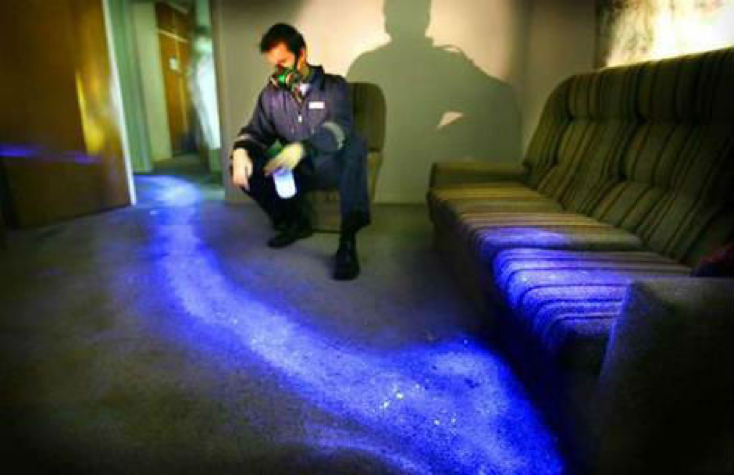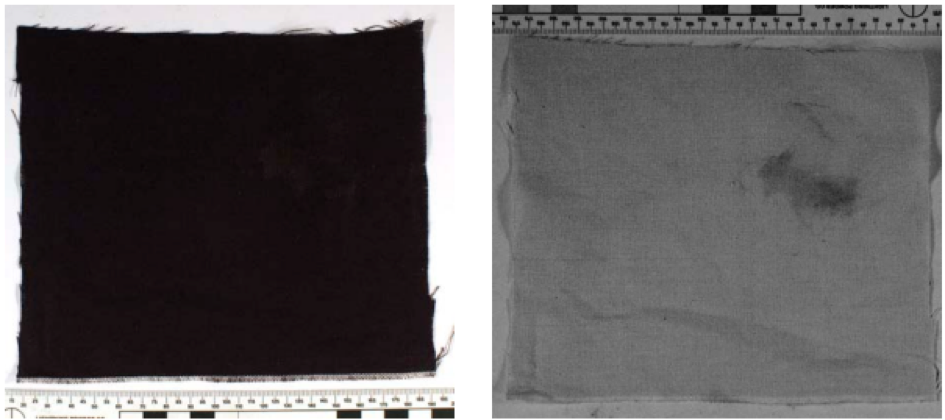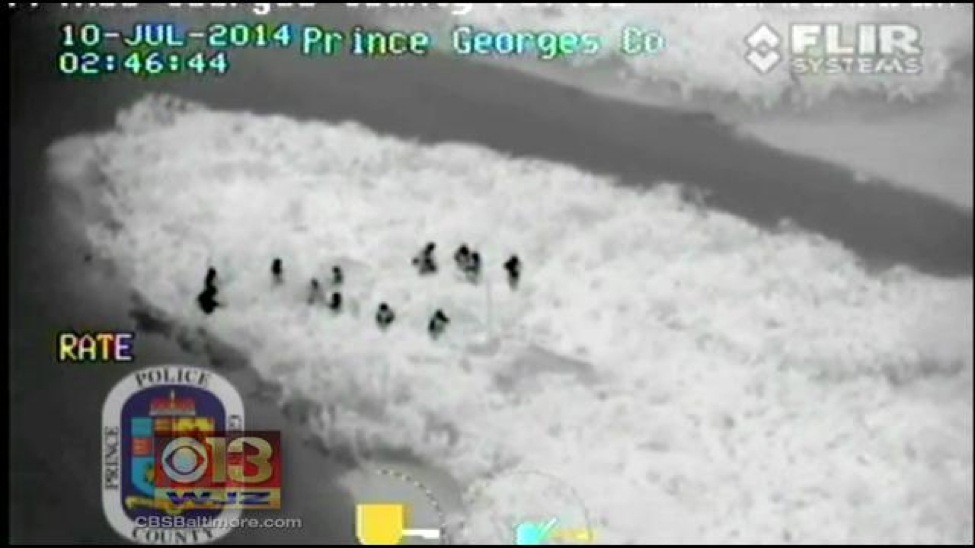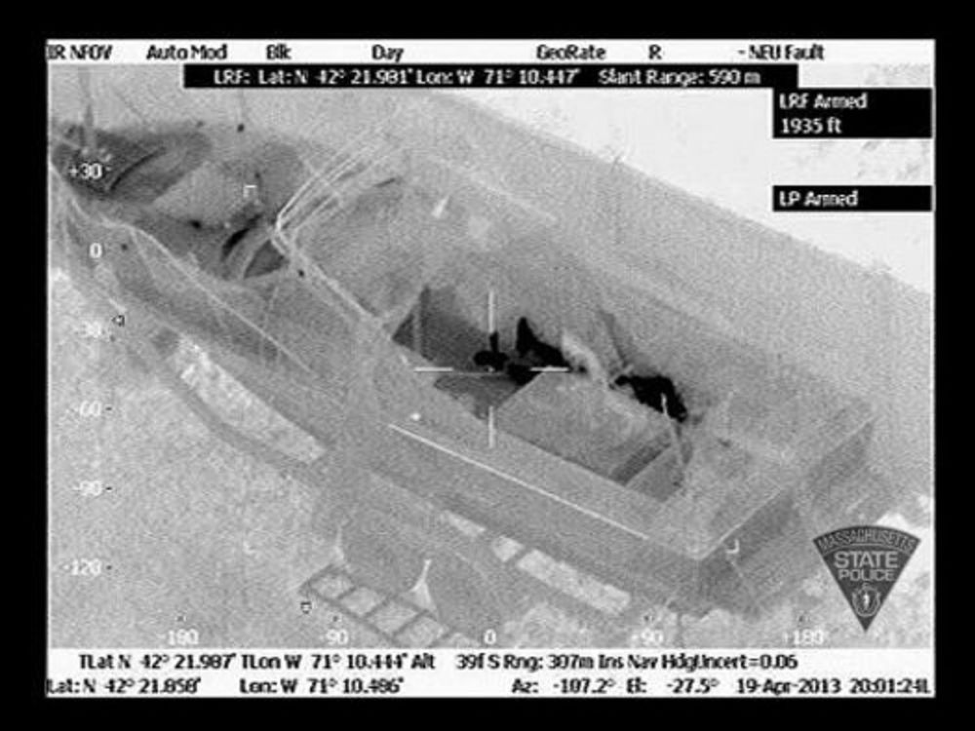Infrared-Based Imaging in Forensics
The night of….
On January 3rd 2012, what started out as a jovial evening among friends turned into a bloodbath. At a camping area in Sarasota, Florida, three men were enjoying a meal around a fire when an argument broke out between two of them. Witnesses in the area immediately called police, but unfortunately they were too late. The suspect, wielding a machete, had killed his friend and fled the scene. One witness remained, and told his account of the evening. However, in order to figure out exactly what happened, investigators used infrared imaging. By examining the blood spatter on the clothing of the victim, suspects and witnesses, as well as the environment in which the murder took place, they were able to figure out exactly how the scene unfolded.
Infrared-Imaging 101
In our everyday world we encounter waves (or radiation) from the electromagnetic spectrum in a myriad of forms. However, the most familiar is what’s found between ultraviolet (UV) and infrared (IR) wavelengths – and is commonly referred to as ‘visible light’.

Quite simply, the light that is visible to human eyes resides between 400 and 700 nanometers. IR light occupies the wavelength between visible light and microwave radiation (or the range between 700 and 15,000 nanometers), and despite being invisible, it is constantly being emitted by objects depending on their temperature. Despite infrared light being invisible to the human eye, it can be detected by cameras with special sensors that convert the infrared light into a signal which is then displayed as an image.

Using IR imaging to solve crimes
Luminol, employed extensively in shows like CSI to reveal bloodstains at a crime scene is an organic compound that exhibits chemiluminescence, or a glowing quality, when mixed with the iron found in blood. When sprayed at a crime scene, it can reveal blood that is not immediately apparent to the human eye. However, it has its limitations – it’s quite toxic and can dilute the blood and render it useless for DNA testing. Since DNA is often the most vital factor in tying a suspect to a crime scene, the preservation of blood is of paramount importance.

Recent advancements in infrared photography have ushered in a new era in crime scene investigation and forensic analysis. By capturing an image with an infrared sensitive camera, illuminated by an alternate light source, blood, or other trace evidence, can be revealed without compromising the crime scene, and can preserve it for further testing and examination. Depending on what investigators are looking for, they can swap out filters on infrared cameras to reveal evidence that can only be seen with specific parts of the infrared spectrum. For example, if they’re looking for blood, they will employ a filter coated with albumin, a protein that is found in both egg whites and blood plasma. Other filters can be used to find drugs, fingerprints and even explosives.

An errant paint chip can mean 25 years to life…
An even more detailed use of infrared technology in forensics is infrared spectroscopy. In simple terms, infrared spectroscopy is the use of infrared light to analyze the chemical bonds within molecules. Each chemical bond within a molecule vibrates at a frequency that is unique to that bond – much like a fingerprint. That allows forensic analysts to figure out exactly what a piece of trace evidence is made up of. For example, they can analyze a paint chip and discover its exact chemical make up and link it back to the manufacturer, and find out what car make it was used on. This can be extremely helpful for investigators in say, a hit and run, as it helps them narrow down which vehicle the suspect was in.
IR forensics is derived from the fact that all molecules, because of the nonstop motion of their atoms, vibrate at a characteristic frequency which falls within the infrared spectrum. When an individual molecule is struck by an infrared photon that matches its vibrational frequency it will resonate, and this resonance, detected through a variety of spectroscopic techniques, can be used to precisely identify the molecule, much like a fingerprint can be used to identify an individual person.
– Lynn Yarris, New Clues from Infrared Forensics
Body heat: a criminal’s worst enemy
Often confused with infrared, thermal imaging is another useful technique used in law enforcement. As previously stated, all objects emit a degree of infrared radiation depending on their temperature, regardless of the degree of visible light.

This means that objects, and in this case people, can be detected in complete darkness. This has proven to be very useful for police monitoring areas at night, and has led to the capture of criminals in hiding. This was the case in Baltimore, Maryland when police caught 3 armed men hiding after committing an armed robbery. Despite fleeing the scene, the robbers were captured using a thermal imaging camera that was attached to a roving police helicopter in a nearby forest.

One of the more famous cases where thermal imaging was proven invaluable was during the aftermath of the tragic Boston Marathon bombing on April 15, 2013. After pinpointing the suspect’s general location to Watertown, Massachusetts, the police then used thermal cameras fastened to the bottom of a helicopter to detect their exact hiding place on a boat. Despite the fact that the suspect was hiding under a tarp in the boat, the thermal imaging camera was able to see through it because his body heat was trans missive.

Immediate evidence
While photography has always been an important tool in forensic investigations, the recent developments in infrared imaging have expanded its role substantially. An even more recent advancement is the development of live infrared imaging. This allows investigators to search a crime scene with an IR sensitive light source and an UV-Vis-IR sensitive camera which is mounted to a lightweight computer tablet. An investigator can use this in-situ at a crime scene and scan the area – picking up on evidence on the spot, without having to send the images to a lab for analysis. While this tool is still quite new, and expensive, they will most likely become more widespread in years to come and become an essential tool in crime scene analysis.
Check out Teledyne DALSA‘s Thermal-Infrared Cameras:
http://teledynedalsa.com/en/news/newsroom/teledyne-dalsa-introduces-infrared-camera-series-for-industrial-vision-applications/



 Multispectral Imaging and the Mona Lisa
Multispectral Imaging and the Mona Lisa  Cameras Made Cool.
Cameras Made Cool. 